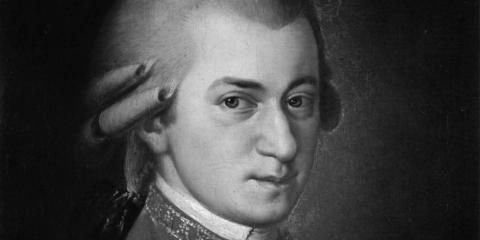MCO’s “Concertante!” can be heard on Wednesday 13 May 7:00pm AEST on Melbourne Digital Concert Hall via live stream and live in the studio audience at the Athenaeum Theatre, Melbourne; and 15 May 2:30pm AEST on Daylesford Town Hall.
BERG arr MULLER
Piano Sonata Op 1 arr string sextet
Alban Berg (1885–1935) was an Austrian composer who, along with his teacher Arnold Schoenberg and fellow student Anton Webern, moved from tonality, through atonality to compose 12-note music in the first part of the twentieth century. The three composers and their associates are often referred to as the Second Viennese School.
Douglas Jarman, writing in Grove Music Online, described Berg as “at once a modernist and a Romantic, a formalist and a sensualist, he produced one of the richest bodies of music in the 20th century, and in opera, especially, he had few equals”. His operas Wozzeck (1923), and Lulu (1936) and the Violin Concerto (1935) are regulars in the repertoire.
The Piano Sonata was composed in 1909 and published in 1910 as Op 1. It is a single movement work centred around the key of B minor. While the composer employs sonata form there is a sense of continual or ‘developing variation’ building around the central idea and revealing the influence of Schoenberg. This is one of the exquisite piano works of the early twentieth century.
The arrangement for String Sextet is by Heime Müller from the Artemis Quartet and was premiered in February 2002.
MOZART
Sinfonia Concertante (string sextet version)
I. Allegro maestoso
II. Andante
III. Presto
Mozart Sinfonia Concertante in E flat major K 364
The Sinfonia Concertante is predominantly a genre of the late eighteenth and early nineteenth centuries for solo instruments (usually two or three but sometimes up to nine instruments) with orchestra. The genre is symphonic in scale with extended solo parts that bring it closer to the concerto in concept.
Wolfgang Amadeus Mozart (1756–1791) composed the E flat Sinfonia Concertante for violin and viola in Salzburg in 1779–80 following his tour to Paris and Mannheim. Around this time he was exploring the idiom with the Sinfonia Concertante for four wind instruments (flute, oboe, bassoon and horn) K 297B, the Concerto for two pianos in E flat K 365, and the Concerto for flute and harp in C major K 299. Fragments remain of two other works: one for piano and violin in D, and another in A major for violin, viola and cello.
The Sinfonia Concertante K 364 is scored for solo violin, solo viola, two oboes, two horns, and strings. The 2016 arrangement for string sextet (two violins, two viola and two cellos) by Orfeo Mandozzi is based on an unattributed arrangement published in 1808. The work appears in a number of arrangements including a piano trio and another for two pianos.
Possibly more than in any other concerto, Mozart is able to encapsulate a universe of emotions and expression. Each movement holds its own beauty – demonstrated so clearly with the exquisite interplay between the two solo instruments and the gentle but supporting punctuations of the other four strings. The potency of this work is in its depth of poignant expression.
© David Forrest 2021

